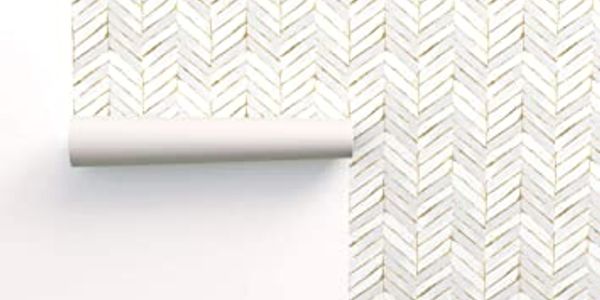Learn about the different types of wallpaper and types of wall that will determine the cost to have wallpaper installed. Get answers to your questions. Wallpaper has come a long way from its traditional roots and is now available in a variety of materials, each offering unique aesthetics, durability, and installation requirements. However, the type of wallpaper you choose and the condition of your walls are critical factors in determining the cost of installation. Here's a breakdown of the different types of wallpaper and how wall surfaces impact installation.
Types of Wallpaper
Vinyl Wallpaper
Vinyl wallpaper is one of the most common types due to its durability and water resistance. It is available in two main types: solid vinyl and vinyl-coated paper. Solid vinyl is highly durable and washable, making it ideal for high-traffic areas like kitchens and bathrooms. Vinyl-coated paper offers a similar look but is less resistant to moisture. The ease of application and removal makes vinyl wallpaper a cost-effective option.
Non-Woven Wallpaper
Non-woven wallpaper is a blend of natural and synthetic fibers, making it breathable and washable. It’s easier to install compared to traditional wallpaper because it doesn’t expand or shrink when applied, and it’s often tear-resistant. Non-woven wallpapers can be removed in strips, which also reduces future labor costs for removal. This type of wallpaper is environmentally friendly and often chosen for living spaces and bedrooms.
Textured Wallpaper
Textured wallpaper adds depth and dimension to walls. Options like grasscloth, cork, or beadboard give a tactile finish, creating a high-end, designer look. However, textured wallpaper is often more expensive due to the material and the additional care required for installation. It’s also more difficult to clean, which may impact where you decide to use it. Installation costs are typically higher due to the complexity of matching textures at the seams.

Peel and Stick Wallpaper
This type of wallpaper is perfect for DIY enthusiasts. As the name suggests, peel-and-stick wallpaper comes with a self-adhesive backing, making it incredibly easy to install without professional help. It is often used for temporary decor or in rental properties where tenants want to avoid permanent alterations. While the material itself is usually affordable, proper installation on uneven surfaces can be challenging, which might still require professional assistance.
Fabric Wallpaper
Fabric wallpapers, made from materials like silk, cotton, or linen, bring a luxurious feel to interiors. They are often more expensive and require careful handling during installation, increasing both the material and labor costs. Professional installation is recommended to prevent damage or uneven application. Fabric wallpaper is ideal for formal spaces such as dining rooms or boardrooms.
Conclusion
The type of wallpaper you choose and the condition of your walls play a major role in determining the total cost of installation. While vinyl and non-woven wallpapers tend to be more affordable and easier to install, textured and fabric wallpapers often require more expertise and preparation. Likewise, smooth drywall surfaces are easier and less costly to work with compared to textured or damaged walls. When planning a wallpaper project, it’s important to account for both the materials and the labor required to ensure the best results within your budget.
Click here:- https://decoandco.com.au/faqs/
CONTACT US
Call us on 0420530766
Email - info@decoandco.com.au

